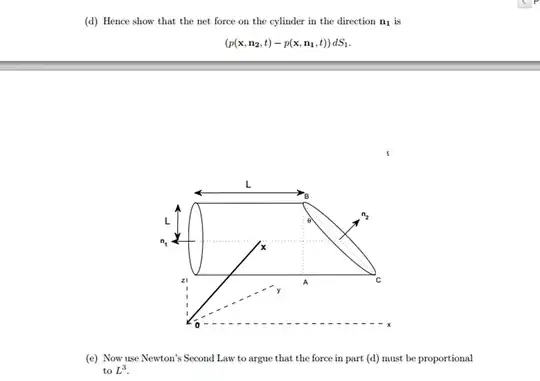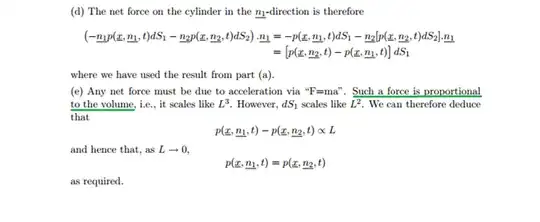I don't follow the part of the solution, which I have underlined in green. Which equation would I get this from (if any)?


I don't follow the part of the solution, which I have underlined in green. Which equation would I get this from (if any)?


In part $d$ you show that $F \sim p dA$, where $p$ is some pressure and $dA$ is some small surface area. We know that $ F = m a$, but it's hard to talk about mass in this setting so let's multiply by $V/V$, Volume over Volume to get things in terms of density. Which is much easier to talk about for fluids. Using the fact that $\rho = m /V$. We obtain
$$ F = \rho V a$$
We assume the density of the liquid is constant. Why do we do this? The technical answer is because molecules don't shrink, if we have $m$ grams of water(for example) in a box of volume $V$, the water will equally distribute all the molecules due to dipole-dipole bonding or van der Waals-forces for different molecules. Thus we say the density is constant for nice fluids. Most things you work with are nice, so we can assume the above, hence the density is constant. Since density is now constant, we now see
$$ F \sim V $$
It doesn't matter what $a$ is (it doesn't have to be constant), we see any change in $V$ linearly changes $F$.
F = pA. The fluid must be incompressible in order to consider only the inlet and outlet pressures otherwise you would need to know the variation of pressure along the tube. @YannHamdaoui already stated the relation between force and volume but I don't see why acceleration should be constant. – Shibli Jun 04 '14 at 05:43